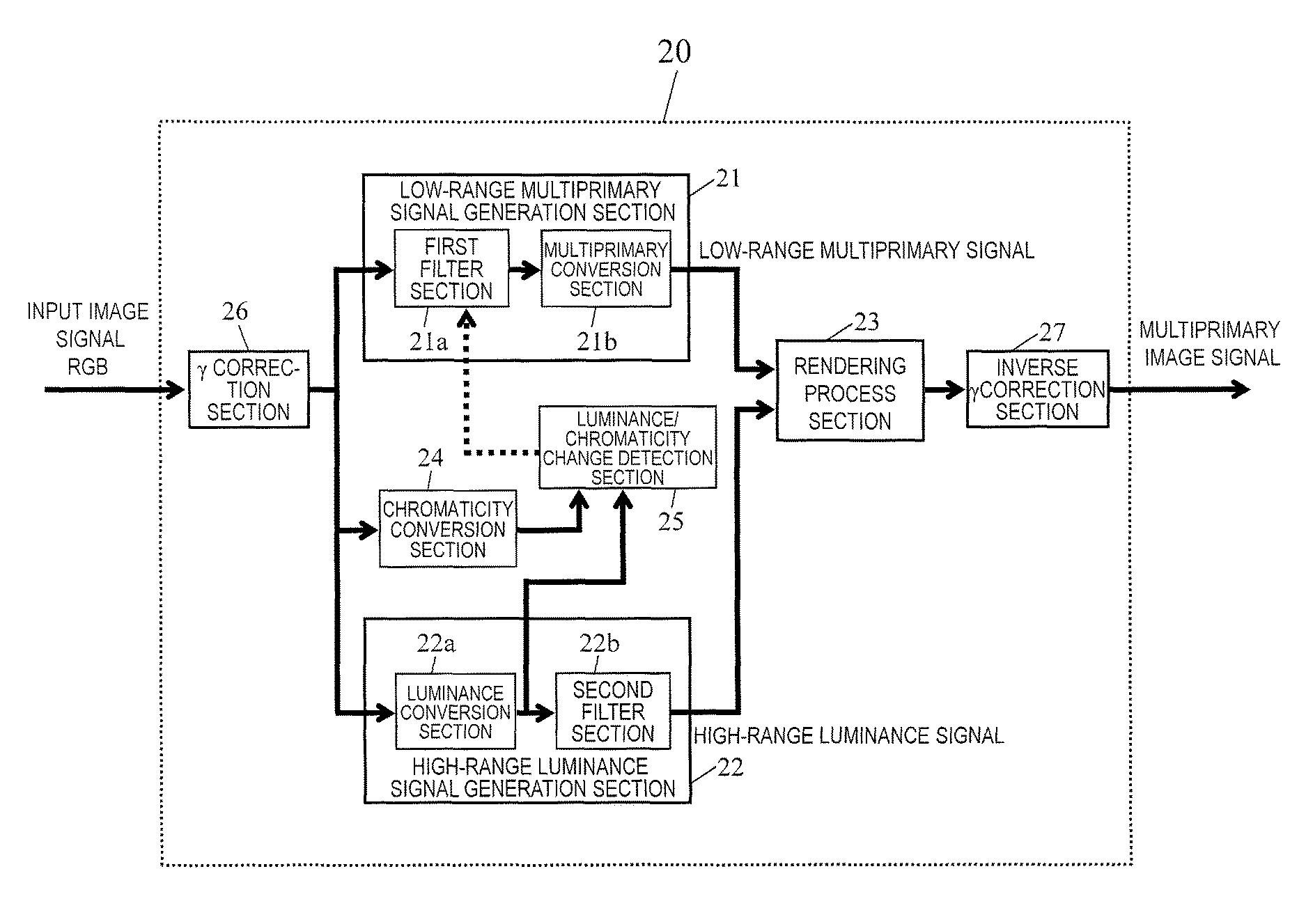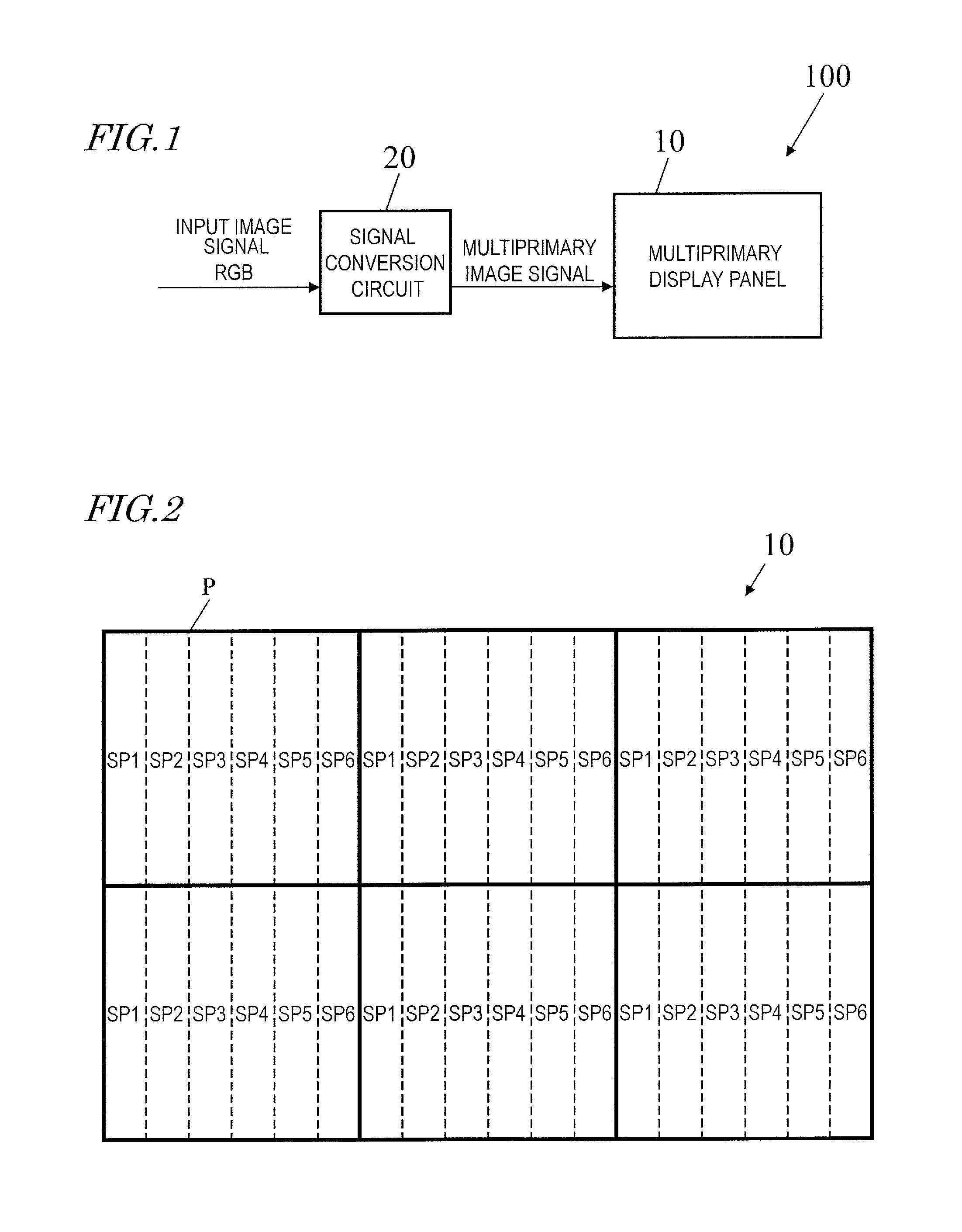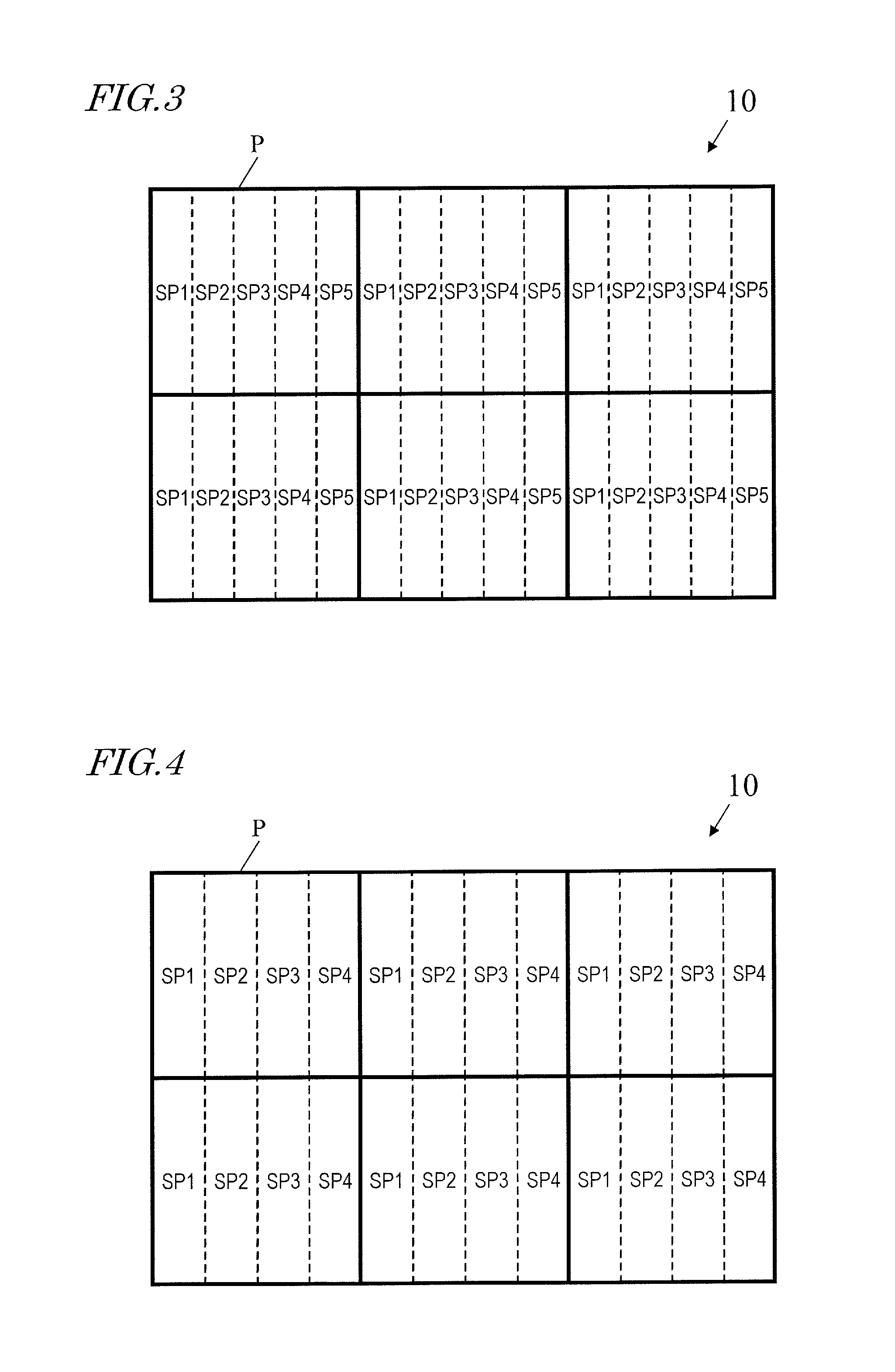Multi-primary color display device
a display device and color technology, applied in semiconductor devices, instruments, electrical devices, etc., can solve the problems of narrow display range, increased production cost, and reduced chromaticity, so as to prevent a decrease in perceived resolution, small changes in luminance, and large changes in chromaticity
- Summary
- Abstract
- Description
- Claims
- Application Information
AI Technical Summary
Benefits of technology
Problems solved by technology
Method used
Image
Examples
embodiment 1
[0122]In the present embodiment, in accordance with a result of detection by the luminance / chromaticity change detection section 25, the first filter section 21a either extracts a low-range component from the input image signal, or passes the input image signal substantially without being filtered. In other words, the plurality of frequency characteristics profiles which are prepared for the first filter section 21a include a frequency characteristics profile which causes the first filter section 21a to pass the input image signal substantially without being filtered.
[0123]Table 2 below shows a relationship between changes in luminance and chromaticity and the frequency characteristics profile of the first filter section 21a.
[0124]
TABLE 2change in luminancesmalllarge(within second(within firstrange ofrange ofluminanceluminancechange)change)change insmallLPFLPFchromaticity(within firstrange ofchromaticitychange)largeall-band passLPF(within secondrange ofchromaticitychange)
[0125]As sh...
embodiment 2
[0134]In the present embodiment, in accordance with a result of detection by the luminance / chromaticity change detection section 25, the first filter section 21a either extracts a low-range component from the input image signal with a first frequency characteristics profile, or extracts a low-range component from the input image signal with a second frequency characteristics profile which is gentler than the first frequency characteristics profile.
[0135]Table 3 below shows a relationship between changes in luminance and chromaticity and the frequency characteristics profile of the first filter section 21a.
[0136]
TABLE 3change in luminancesmalllarge(within second(within firstrange ofrange ofluminanceluminancechange)change)change insmallLPF1LPF1chromaticity(within firstrange ofchromaticitychange)largeLPF2LPF1(within secondrange ofchromaticitychange)
[0137]As shown in Table 3, when a detected change in luminance is relatively large (i.e., within a predetermined first range of luminance c...
embodiment 3
[0147]While Embodiments 1 and 2 illustrate that two frequency characteristics profiles are provided for the first filter section 21a, three or more may instead be provided.
[0148]In the present embodiment, in accordance with a result of detection by the luminance / chromaticity change detection section 25, the first filter section 21a either extracts a low-range component from the input image signal with a first frequency characteristics profile, extracts a low-range component from the input image signal with a second frequency characteristics profile which is gentler than the first frequency characteristics profile, or passes the input image signal substantially without being filtered.
[0149]Table 4 below shows a relationship between changes in luminance and chromaticity and the frequency characteristics profile of the first filter section 21a.
[0150]
TABLE 4change in luminancesmallmediumlarge(within(within(withinthirdsecondfirstrange ofrange ofrange ofluminanceluminanceluminancechange)c...
PUM
 Login to View More
Login to View More Abstract
Description
Claims
Application Information
 Login to View More
Login to View More - R&D
- Intellectual Property
- Life Sciences
- Materials
- Tech Scout
- Unparalleled Data Quality
- Higher Quality Content
- 60% Fewer Hallucinations
Browse by: Latest US Patents, China's latest patents, Technical Efficacy Thesaurus, Application Domain, Technology Topic, Popular Technical Reports.
© 2025 PatSnap. All rights reserved.Legal|Privacy policy|Modern Slavery Act Transparency Statement|Sitemap|About US| Contact US: help@patsnap.com



